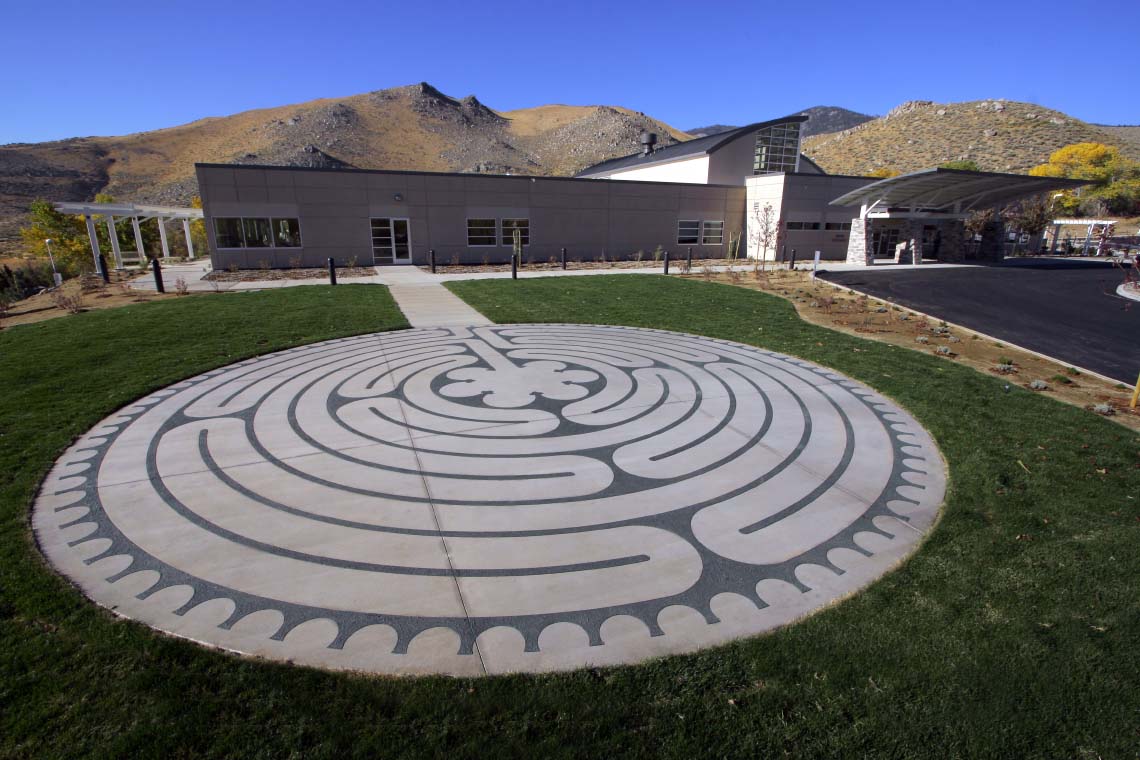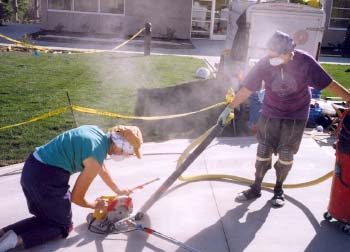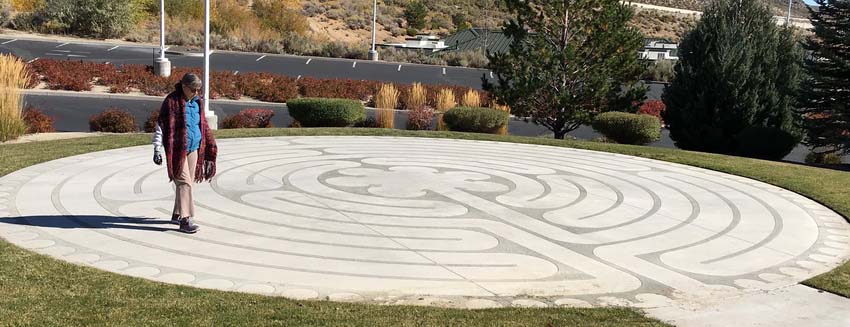Carson Labyrinth

This photo of the Carson Cancer Center Labyrinth was taken in 2006, when the project was completed. It is located at the far northern end of the valley above the Carson Tahoe Medical Center and the Carson Cancer Center. Carson Rotarians donated $75,000 for the labyrinth and another $200,000 for the Cancer Center Expansion Project over four years from 2005 to 2009. 2005 Club President Rafael Cappucci still looks back on this project with pride in the way Rotary has supported the community.

Carson Tahoe Health & Carson Rotary Celebrate Labyrinth Anniversary & Community Partnership
(Carson City, Nev.) November 6, 2019 – Today marks 13 years since the opening of the outdoor Labyrinth located at the Carson Tahoe Cancer Center. The unique space was made possible through a generous donation from the Rotary Club of Carson City. In 2006, under the leadership of past president Rafael Cappucci, the Rotary Club contributed $75,000 to build the Labyrinth, and gave another $200,000 in support of the Cancer Center project over a four-year period.
“We are truly grateful to our dedicated community partners,” says Alan Garrett, President & CEO of Carson Tahoe Health. “Although I’m new to the community, it’s evident how much the Rotary Club has given to our region, and specifically, to Carson Tahoe. Collaborations such as the one we have with the Rotary are essential to improving health and wellness. The labyrinth is especially meaningful as we care for the whole person – body, mind, and spirit.”
Carson Tahoe Cancer Center was the first (and is still the only) healthcare facility in Northern Nevada to construct and implement a Chartres-like labyrinth to complement traditional cancer treatment. The 36-ft. in diameter labyrinth is just one feature in Carson Tahoe Cancer Center’s healing environment.
“A labyrinth is an ancient symbol that relates to wholeness. It combines the imagery of the circle and the spiral into a meandering but purposeful path,” said Robert Ferré, owner and director of Labyrinth Enterprises. He’s built and installed more than 800 labyrinths that are similar to the Carson City Labyrinth. “The Labyrinth represents a journey to our own center and back again out into the world, so in actuality, a labyrinth is a tool, a gateway or physical entry point to the energy and truth that lie beyond the visible.”
Carson Tahoe Health would like to express gratitude to Carson City Rotary Club not only for what they have contributed to CTH but what they continually do to support our community.
“In the coming months, we plan to ask our club membership to consider some restoration work on this labyrinth, under Ferré’s guidance. The Nevada sun has washed out the color in the lines, and it’s going to need some meticulous hand work to bring it back to it’s original state,” said Gary Jesch, Director of the Rotary Club of Carson City. “This seems like a worthy project for our Rotary members to work on, with people from the community and Carson Tahoe Health.”
###
About Carson Tahoe Health
Carson Tahoe Health is a local, not-for-profit healthcare system with 240 licensed acute care beds. Serving a population of over 250,000, CTH features two hospitals, two urgent cares, an emergent care center, outpatient services and a provider network with 21 regional locations.
The system is headquartered on a beautiful master-planned 80-acre medical campus nestled among the foothills of the Sierra Nevada in North Carson City. As the system’s cornerstone, Carson Tahoe Regional Medical Center (CTRMC), voted 5th most beautiful hospital in the nation, was the first Baby-Friendly designated hospital in Nevada. Also included on the campus is Carson Tahoe Sierra Surgery, the 15-bed boutique elective surgery arm of CTRMC, and Carson Tahoe Cancer Center, an affiliate of Huntsman Cancer Institute, University of Utah. For more information, go to www.carsontahoe.com.
About Rotary Club of Carson City
The Rotary Club of Carson City was chartered by Rotary International in 1938 and has continuously served the local community with a wide variety of projects involving young student leaders, businesses and Carson City families.
The Rotary Club of Carson City was chartered by Rotary International in 1938 and has continuously served the local community with a wide variety of projects involving young student leaders, businesses and Carson City families.
It’s best known for its Rotary Youth Exchange program, which offers children of local families the ability to study overseas and to host students from other countries in their own homes. From its annual fundraiser, the Capital City Brewfest, to ongoing grants helping teachers in the Carson City School District, the club’s many members believe in integrity, philanthropy, dedication and friendship and come together weekly at the Brewery Arts Center on Tuesdays at 12 noon. More info is available at carsonrotary.org
The Labyrinth Today

Today, the Labyrinth abides under the Nevada sun, available to those seeking a walking meditation or a little quiet time. Its paths are a bit faded, but still serve nicely, and the greenery around the park has grown into the open landscape.
From the labyrinth, one can see the welcoming doors of the Cancer Center as well as the cottage-like apartments available to those who need a place to stay at the Medical Center. The freeway cuts across the hillside to the north, where it is a short trip into Reno.
Robert Ferré, the head of Labyrinth Enterprises, said the Carson Labyrinth was made by his first all-female team of artists, who used specially designed saws to cut the paths directly into the cement (above). His right-hand person was the lead artist - Judy Hopen, and he says she made more labyrinths than anyone in history - at least 800 and all hand-made.
John Ridder was the designer of this one, and incorporated eight paths into the 36-ft. piece of art, rather than the traditional Chartres labyrinth in Paris which has 11 paths. His design featured 84 scallops (3x28) called "lunations" around the edge, whereas the full-sized labyrinth has 112 (4x28). The lunations are associated with the lunar calendar and lunar months, a feminine attribution pertaining to the Virgin Mary, says Ferré.
Ferré has offered to consult and assist with any kind of restoration projects, He says there are several approaches, from recoloring the paths to simply resealing the entire concrete pad. He also suggested adding some benches and possibly a notebook, where people using the labyrinth could document their experience of walking, much like mountain climbers do when they climb a popular summit,
Currently, the Cancer Center doesn't keep any records on how many have used the Labyrinth over the years. It's such a private and personal experience, to those who walk before and after their chemo treatments.

.png)












